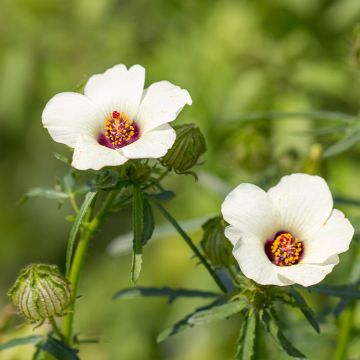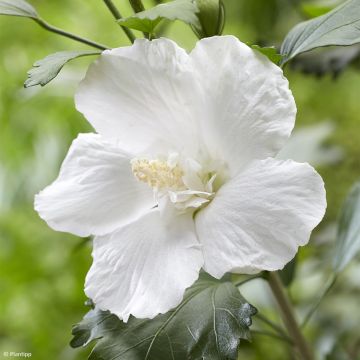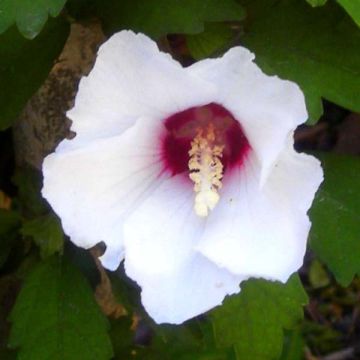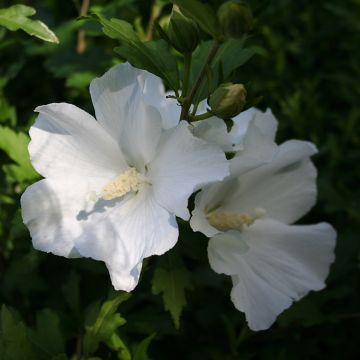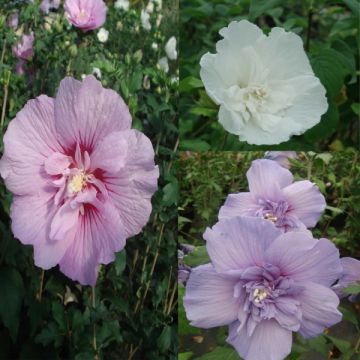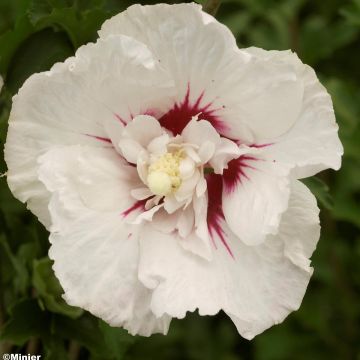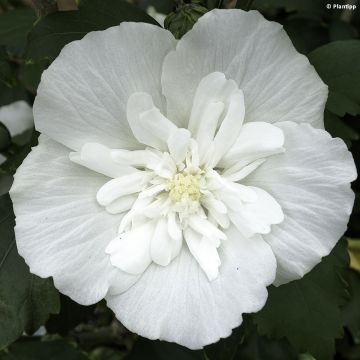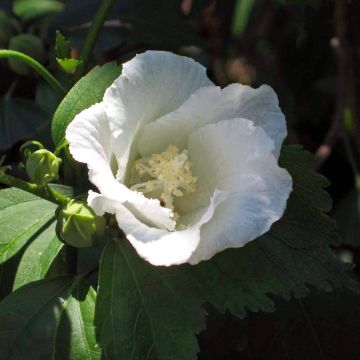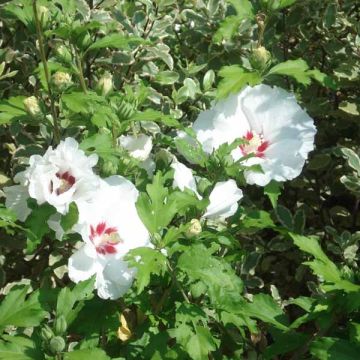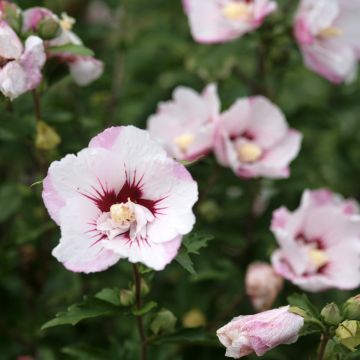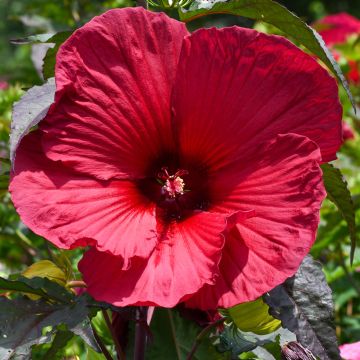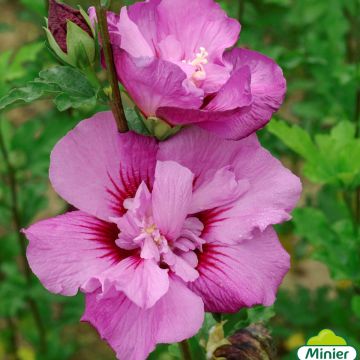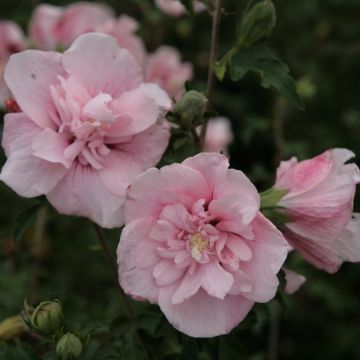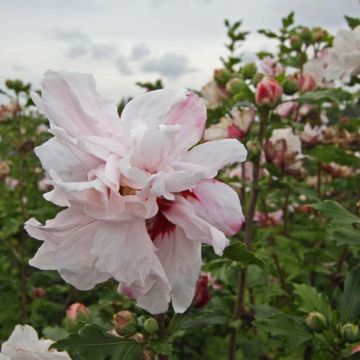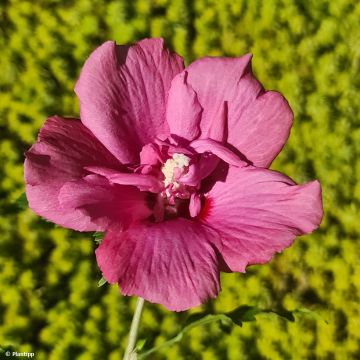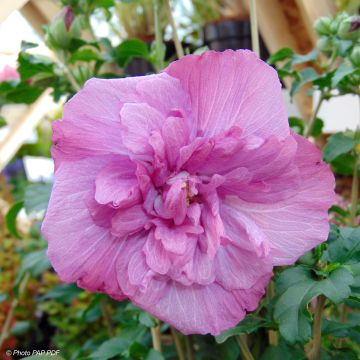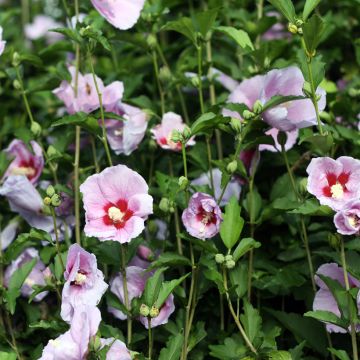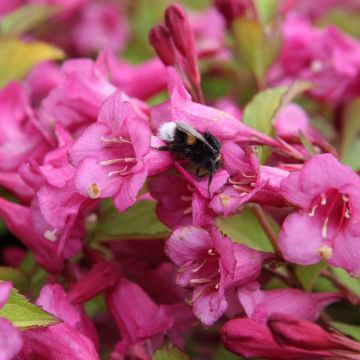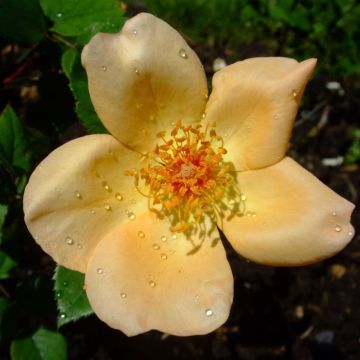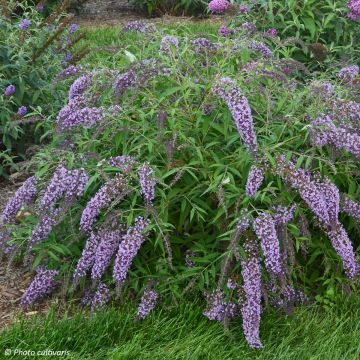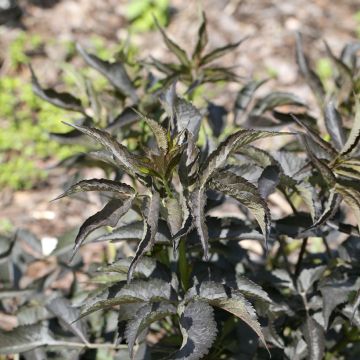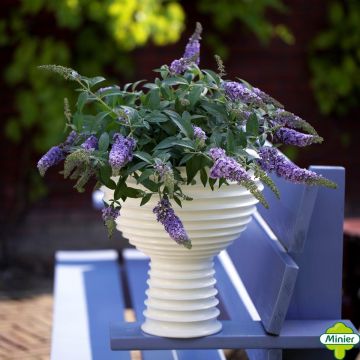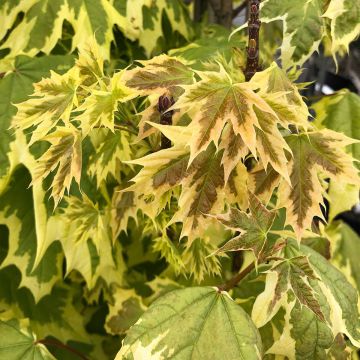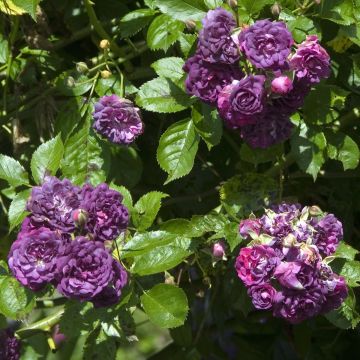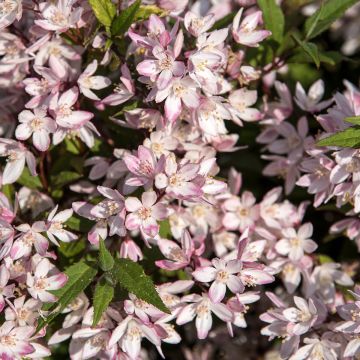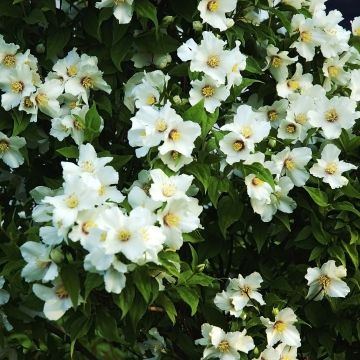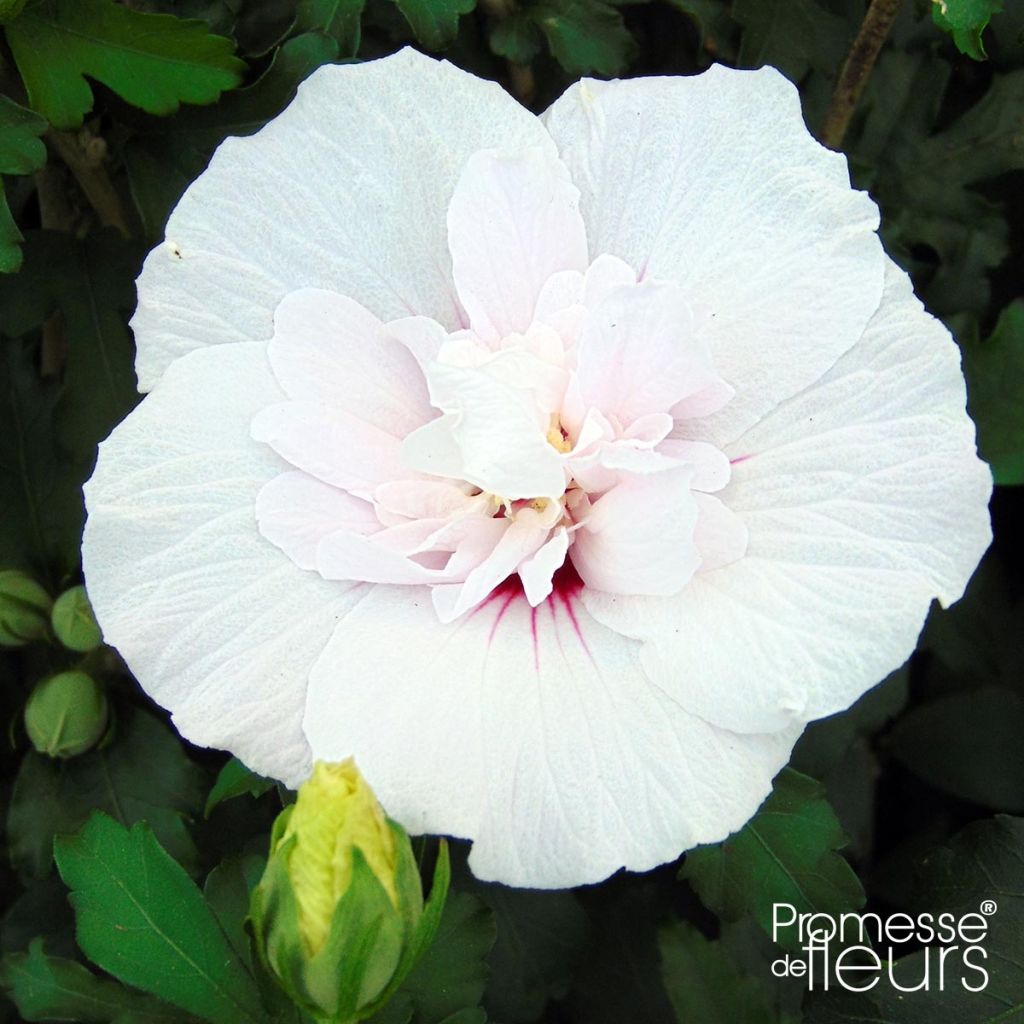

Hibiscus syriacus China Chiffon - Rose of Sharon
Hibiscus syriacus China Chiffon - Rose of Sharon
Hibiscus syriacus China Chiffon® 'Bricutts'
Common Hibiscus, Rose of Sharon, Syrian ketmia, St Joseph's rod, Garden Hibiscus
Why not try an alternative variety in stock?
View all →This plant carries a 24 months recovery warranty
More information
We guarantee the quality of our plants for a full growing cycle, and will replace at our expense any plant that fails to recover under normal climatic and planting conditions.
Oversize package: home delivery by special carrier from €6.90 per order..
Express home delivery from €8.90.
Delivery to Corse prohibited: UE law prohibits the import of this plant from mainland France to Corse as part of the fight against Xylella fastidiosa. Please accept our sincere apologies.
More information
Does this plant fit my garden?
Set up your Plantfit profile →
Description
The Hibiscus syriacus China Chiffon 'Bricutts' is a highly cultivated selection from the Chiffon range, known for its large double flowers, pure white with a striped red heart, crowned with a bouquet of shorter, crinkled petals with a unique charm. It is a vigorous deciduous bush with an upright and well-branched habit suited for container cultivation. It is very floriferous and bears bright flowers that continuously bloom from July to September. Not demanding, it also has good resistance to pests and diseases and requires only light pruning at the end of winter to maintain its compact and floriferous growth. It is a versatile bush that can be used in a hedge, border, standalone plant, or container. Position it in a sunny exposure with ordinary, even limestone soil.
The Hibiscus syriacus, also known as the Rose of Sharon, is a hardy deciduous shrub that can survive in our climate. However, in warm temperatures, its foliage remains intact throughout the winter. Belonging to the Malvaceae family, it is related to lavateras, hollyhocks, and marshmallows. The shrub is originally from temperate regions of Asia, including Korea, China, and India, and has produced many more resilient and flower-filled varieties over time!
China Chiffon 'Bricutts' is a hybrid mutation of 'Lavender Chiffon', created by André Briant. It is part of the Chiffon range, known for its double flowers with a silky chiffon-like appearance. This variety grows into a bush that is typically 2.5 m (8 ft 2 in) tall and 2 m (6 ft 7 in) wide on average. It has an upright habit and a well-branched structure. 'Bricutts' usually bloom from the second half of July and flower until September if the weather is mild. The flowers last only 24 hours and are composed of pure white petals with a scarlet red striated heart. Double, they are 8 to 10 cm (3.1 to 3.9 in) wide. The petals are arranged around shorter, undulating petals that partially conceal the cream-coloured stamens and pistil. The leaves of this plant are alternate, simple, heart-shaped, and lobed. The edges of the leaves are toothed and wavy. The foliage of 'Bricutts' is very healthy and has a slightly satin, dark olive-green appearance. It turns yellow in autumn before falling.
The 'China Chiffon 'Bricutts' appreciates bright, warm exposures and can tolerate light shade in southern regions. This hibiscus requires little maintenance and grows steadily in the first years. A short pruning after flowering helps to keep the bush compact and floriferous. Plant it in a sheltered location, protected from strong winds, in soil that remains slightly moist until the end of summer. This attractive variety can be used in a medium-sized hedge, combined with other hibiscus with different colours, botanical roses, mock oranges, lilacs, and butterfly bushes that will provide the fragrance it lacks. It can also be planted as a standalone or at the back of a perennial bed composed of daylilies, asters, or shrubby salvias.
Report an error about the product description
Hibiscus syriacus China Chiffon - Rose of Sharon in pictures
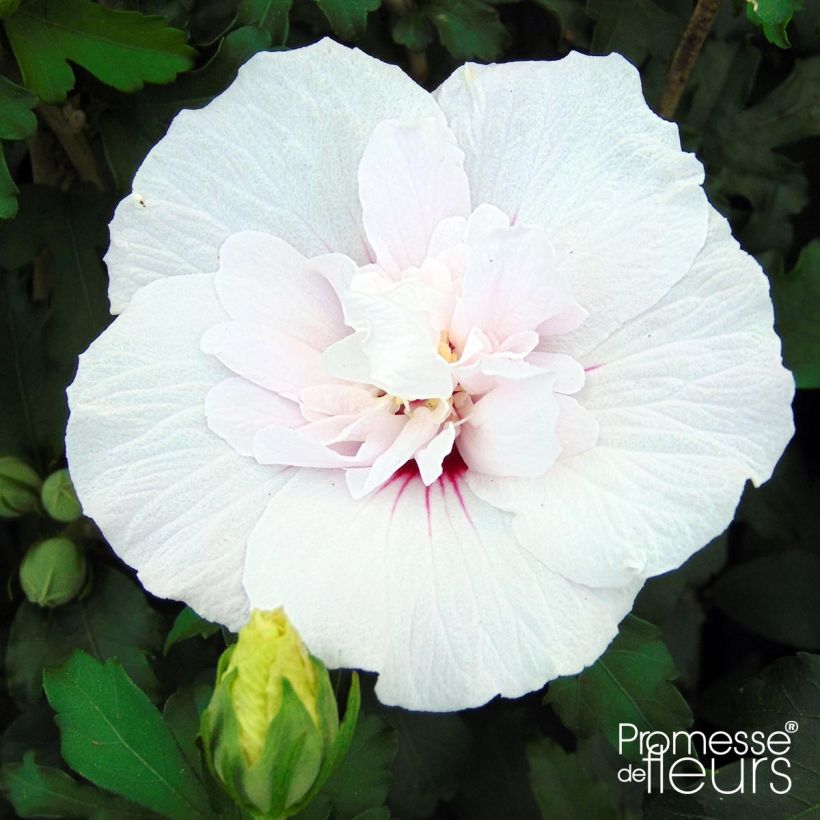

Plant habit
Flowering
Foliage
Botanical data
Hibiscus
syriacus
China Chiffon® 'Bricutts'
Malvaceae
Common Hibiscus, Rose of Sharon, Syrian ketmia, St Joseph's rod, Garden Hibiscus
Cultivar or hybrid
Other Hibiscus
Planting and care
To plant the 'China Chiffon' Hibiscus, choose either spring or autumn and find a location with plenty of sunlight. If you live in a warmer area, partial shade can be used. The soil should be well-drained, deep, loose, and fertile. If the soil needs improvement, add garden soil, compost, and sand to the planting hole. After planting, water generously. Do not be concerned if the vegetation does not form before May, as this is typical for this plant. At maturity, it can withstand temperatures as low as -20°C (-4 °F) and grow in almost all regions except mountainous areas or very cold winter regions. If you want your shrubby hibiscus to thrive, ensure it can handle heat and occasional dry soil. However, the bushes are more vibrant and floriferous when grown in soil that retains moisture during the summer. If necessary, mulch the base of the plant and water it.
Planting period
Intended location
Care
This item has not been reviewed yet - be the first to leave a review about it.
Foolproof Shrubs
Haven't found what you were looking for?
Hardiness is the lowest winter temperature a plant can endure without suffering serious damage or even dying. However, hardiness is affected by location (a sheltered area, such as a patio), protection (winter cover) and soil type (hardiness is improved by well-drained soil).

Photo Sharing Terms & Conditions
In order to encourage gardeners to interact and share their experiences, Promesse de fleurs offers various media enabling content to be uploaded onto its Site - in particular via the ‘Photo sharing’ module.
The User agrees to refrain from:
- Posting any content that is illegal, prejudicial, insulting, racist, inciteful to hatred, revisionist, contrary to public decency, that infringes on privacy or on the privacy rights of third parties, in particular the publicity rights of persons and goods, intellectual property rights, or the right to privacy.
- Submitting content on behalf of a third party;
- Impersonate the identity of a third party and/or publish any personal information about a third party;
In general, the User undertakes to refrain from any unethical behaviour.
All Content (in particular text, comments, files, images, photos, videos, creative works, etc.), which may be subject to property or intellectual property rights, image or other private rights, shall remain the property of the User, subject to the limited rights granted by the terms of the licence granted by Promesse de fleurs as stated below. Users are at liberty to publish or not to publish such Content on the Site, notably via the ‘Photo Sharing’ facility, and accept that this Content shall be made public and freely accessible, notably on the Internet.
Users further acknowledge, undertake to have ,and guarantee that they hold all necessary rights and permissions to publish such material on the Site, in particular with regard to the legislation in force pertaining to any privacy, property, intellectual property, image, or contractual rights, or rights of any other nature. By publishing such Content on the Site, Users acknowledge accepting full liability as publishers of the Content within the meaning of the law, and grant Promesse de fleurs, free of charge, an inclusive, worldwide licence for the said Content for the entire duration of its publication, including all reproduction, representation, up/downloading, displaying, performing, transmission, and storage rights.
Users also grant permission for their name to be linked to the Content and accept that this link may not always be made available.
By engaging in posting material, Users consent to their Content becoming automatically accessible on the Internet, in particular on other sites and/or blogs and/or web pages of the Promesse de fleurs site, including in particular social pages and the Promesse de fleurs catalogue.
Users may secure the removal of entrusted content free of charge by issuing a simple request via our contact form.
The flowering period indicated on our website applies to countries and regions located in USDA zone 8 (France, the United Kingdom, Ireland, the Netherlands, etc.)
It will vary according to where you live:
- In zones 9 to 10 (Italy, Spain, Greece, etc.), flowering will occur about 2 to 4 weeks earlier.
- In zones 6 to 7 (Germany, Poland, Slovenia, and lower mountainous regions), flowering will be delayed by 2 to 3 weeks.
- In zone 5 (Central Europe, Scandinavia), blooming will be delayed by 3 to 5 weeks.
In temperate climates, pruning of spring-flowering shrubs (forsythia, spireas, etc.) should be done just after flowering.
Pruning of summer-flowering shrubs (Indian Lilac, Perovskia, etc.) can be done in winter or spring.
In cold regions as well as with frost-sensitive plants, avoid pruning too early when severe frosts may still occur.
The planting period indicated on our website applies to countries and regions located in USDA zone 8 (France, United Kingdom, Ireland, Netherlands).
It will vary according to where you live:
- In Mediterranean zones (Marseille, Madrid, Milan, etc.), autumn and winter are the best planting periods.
- In continental zones (Strasbourg, Munich, Vienna, etc.), delay planting by 2 to 3 weeks in spring and bring it forward by 2 to 4 weeks in autumn.
- In mountainous regions (the Alps, Pyrenees, Carpathians, etc.), it is best to plant in late spring (May-June) or late summer (August-September).
The harvesting period indicated on our website applies to countries and regions in USDA zone 8 (France, England, Ireland, the Netherlands).
In colder areas (Scandinavia, Poland, Austria...) fruit and vegetable harvests are likely to be delayed by 3-4 weeks.
In warmer areas (Italy, Spain, Greece, etc.), harvesting will probably take place earlier, depending on weather conditions.
The sowing periods indicated on our website apply to countries and regions within USDA Zone 8 (France, UK, Ireland, Netherlands).
In colder areas (Scandinavia, Poland, Austria...), delay any outdoor sowing by 3-4 weeks, or sow under glass.
In warmer climes (Italy, Spain, Greece, etc.), bring outdoor sowing forward by a few weeks.

































